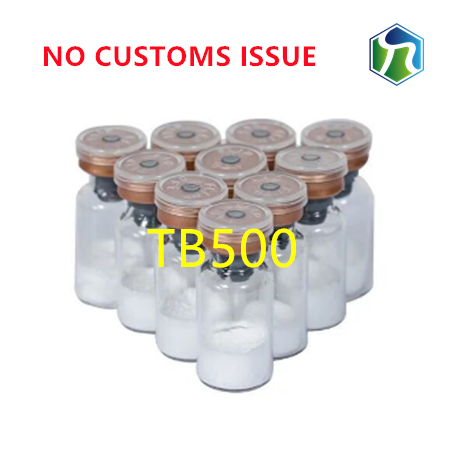
- +86-13363869198
- weimiaohb@126.com

Dec . 11, 2024 20:28 Back to list
reactive intermediates in organic chemistry structure mechanism and reactions
Reactive Intermediates in Organic Chemistry Structure, Mechanism, and Reactions
Reactive intermediates are crucial species in organic chemistry, playing pivotal roles in various chemical reactions. These intermediates are transient molecular entities that form during the transformation of reactants into products. Due to their high reactivity, they typically exist for a very short duration, making them challenging to study directly. However, understanding their structure and mechanisms is essential for grasping how organic reactions occur.
Types of Reactive Intermediates
The most common types of reactive intermediates include carbocations, carbanions, free radicals, and carbenes. Each of these species has distinct structural characteristics and reactivity patterns.
1. Carbocations are positively charged carbon species with three substituents and a vacant p orbital. Their stability increases with the degree of substitution; for instance, tertiary carbocations are more stable than secondary or primary ones. This stability is often explained through hyperconjugation and the inductive effect. Carbocations are typically formed during reactions such as electrophilic addition and nucleophilic substitution.
2. Carbanions, on the other hand, carry a negative charge on a carbon atom, resulting in four substituents—three bonds and one lone pair. Their reactivity is influenced by the stability provided by electron-withdrawing or donating groups. Carbanions are integral to a variety of organic reactions, including nucleophilic substitutions and the formation of carbon-carbon bonds.
3. Free radicals are neutral species with an unpaired electron, making them highly reactive. These intermediates are often formed in processes like the homolytic cleavage of covalent bonds. Free radicals play essential roles in polymerization and combustion reactions, where their chain mechanisms can propagate through the generation of additional radicals.
4. Carbenes are another class of reactive intermediates characterized by a divalent carbon atom with only six electrons in its valence shell. They can exist in singlet or triplet states, with the singlet state being more reactive due to the absence of unpaired electrons. Carbenes are often involved in insertion reactions and serve as key intermediates in various organic synthesis pathways.
reactive intermediates in organic chemistry structure mechanism and reactions

Mechanisms Involving Reactive Intermediates
Understanding the mechanisms through which reactive intermediates participate in reactions is fundamental to the study of organic chemistry. Mechanistic pathways often delineate the stages of reaction processes, from the formation of intermediates to their conversion into final products.
Take, for instance, the SN1 reaction mechanism, which involves the formation of a carbocation as a key intermediate. The mechanism begins with the dissociation of a leaving group, resulting in a carbocation intermediate. The subsequent nucleophilic attack on this carbocation leads to the formation of the product. The stability of the carbocation significantly influences the reaction's rate and outcome.
In contrast, the SN2 reaction involves a different approach. Here, a carbanion acts as the nucleophile, simultaneously displacing the leaving group. This bimolecular mechanism highlights the concerted nature of the transition state, where both nucleophilic attack and bond cleavage occur in a single step.
Radicals play a crucial role in radical substitution reactions. Initiation, propagation, and termination are the three key phases in radical mechanisms. For example, in the halogenation of hydrocarbons, light or heat can initiate the reaction, creating halogen free radicals that abstract hydrogen from the hydrocarbon, resulting in the formation of alkyl radicals, which can further react to generate halogenated products.
Conclusion
Reactive intermediates are foundational in understanding organic chemistry's complexity. Their unique structures—carbocations, carbanions, free radicals, and carbenes—dictate their reactivities and the pathways through which they contribute to reactions. By elucidating these mechanisms, chemists can design more efficient synthetic strategies and predict the outcomes of chemical reactions. The study of reactive intermediates not only enriches our comprehension of organic reactions but also paves the way for advances in diverse areas such as pharmaceuticals, materials science, and catalysis. Understanding these transient species ultimately enhances our ability to manipulate chemical processes and develop innovative solutions to modern challenges.
-
GS-441524 White Liquid Production for Factories | AI-Optimized
NewsAug.02,2025
-
AI-Optimized CAS: 79099-07-3 Factories for High Yield
NewsAug.01,2025
-
Premium CAS 1451-83-8 Factory with GPT-4 Turbo | AI-Optimized
NewsJul.31,2025
-
Pharmaceutical Intermediates - AI-Optimized Synthesis & Purity
NewsJul.31,2025
-
Top CAS: 79099-07-3 Factories & Wholesale Supplier from China
NewsJul.30,2025
-
High-Quality GS-441524 for White Liquid Type Factories & Suppliers
NewsJul.29,2025